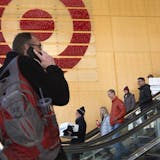Despite the mounting death toll from the novel coronavirus, Minnesota state health officials continue to conceal vital information that could affect thousands of state residents: the names and locations of the growing number of long-term care facilities where residents and staff have tested positive.
The Minnesota Department of Health has repeatedly declined to disclose the information, citing concerns that releasing the names of facilities would violate state privacy laws by potentially exposing the identities of those infected with the virus. The agency has insisted on keeping the facility names confidential even as officials in other states — including California and Colorado — have provided the names and locations of long-term care facilities with confirmed cases of COVID-19, the disease caused by the virus.
State health officials face growing pressure to release the information as the number of confirmed cases and fatalities accelerate in senior care facilities, which have scrambled to quarantine infected residents. So far, 11 of Minnesota's 17 coronavirus fatalities have occurred among residents in nursing homes and assisted-living facilities. Statewide, 38 residents and 22 staff of long-term care facilities have been infected — exceeding any other setting. One facility, which has not been identified, has six confirmed cases, state officials said.
Minnesota's limited disclosure of facility data has been criticized by some public health experts, who say the information would help people make more informed decisions about where to place their loved ones. The information could also help the public detect patterns, such as whether particular facilities or nursing home chains have multiple COVID-19 cases and should be avoided, and find possible links between the cases and facilities with poor infection-control records.
Families are also clamoring to know whether any particular senior living facilities have become hot spots for the virus, so they can determine whether they should bring their loved ones home. Such dangerous clusters of cases have become more common. Among the first contagion hot spots was a nursing home in Kirkland, Wash., where two-thirds of the residents fell ill and at least 37 have died. A nursing home near Nashville had to be closed this week after an outbreak left two dead and more than 100 sickened.
More than 400 long-term care facilities nationwide have at least one infected resident, according to the U.S. Centers for Disease Control and Prevention.
"This is literally about life and death. I cannot imagine a more dangerous place for an elderly and vulnerable person to be than to be in a facility that has experienced an outbreak," said Jennifer Wright, an elder law attorney from Roseville whose mother lives in a senior care facility. "It's absolutely critical for the public to know which facilities have [COVID-19 cases] or this could jump from facility to facility like wildfire."
Since the outbreak began, the state Health Department has encouraged nursing homes and assisted-living facilities to notify residents and their family members of any confirmed cases of COVID-19, and provided them with a one-page form to do so. Even so, there are still no consistent, industrywide standards for disclosure. The result is that communications have varied, which has contributed to growing public paranoia over the virus' spread, elder care advocates say.



